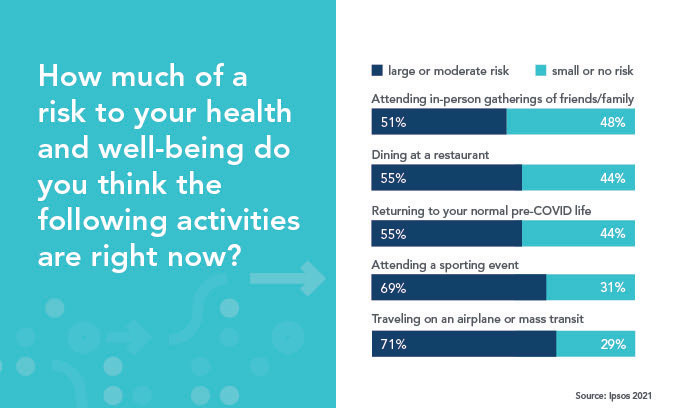Introduction
When the COVID-19 pandemic forced billions indoors, human interaction shrank to screens, masks, and six feet of distance. While this isolation saved lives, it also disrupted social rhythms. Now, even as societies reopen, many people experience something unexpected: post-pandemic social anxiety in everyday settings. Situations once routine—attending a meeting, chatting with strangers, dining with friends—now feel daunting. This post-pandemic social anxiety highlights how profoundly our social brains adapted to isolation, and how challenging it can be to reenter “normal” life.
Read More: Self Compassion in Anxiety and Depression
What Is Social Anxiety?
Social anxiety is characterized by intense fear of judgment, embarrassment, or rejection in social contexts (American Psychiatric Association, 2013). While not everyone experiences clinical social anxiety disorder, many report heightened discomfort in social situations. Post-pandemic, this has spread beyond those with preexisting conditions, affecting individuals who previously felt socially confident.

The Pandemic’s Psychological Disruptions
Some ways in which pandemic causes disruptions include:
-
Isolation as Habit
Humans are social animals, but behavior is shaped by habit. Months (or years) of reduced interaction created new defaults: solitude, digital communication, and avoidance. When restrictions lifted, returning to crowds felt unnatural. -
Fear Conditioning
During the pandemic, social contact was framed as dangerous—potentially life-threatening. This created an implicit association: people = risk. Even after vaccines and declining cases, the conditioned fear lingers. -
Erosion of Social Skills
Like muscles, social skills require exercise. Without regular practice, people lost fluency in casual conversation, small talk, and group dynamics. Research suggests long breaks from social interaction impair confidence (Sandstrom & Dunn, 2014). -
Uncertainty and Ambiguity
Rules kept changing: masks required, then optional; gatherings banned, then allowed. This unpredictability reinforced social hesitation, fostering hypervigilance.

Generational Differences
Some of the generational differences include:
-
Children and Adolescents: Developmental milestones—playdates, school dances, group learning—were disrupted. Many teens now face increased shyness and hesitation in forming friendships (Loades et al., 2020).
-
Young Adults: College students and early career professionals lost key opportunities for socialization, internships, and networking. Their emerging adulthood identity formation was slowed.
-
Older Adults: Already vulnerable to loneliness, older populations often developed stronger avoidant habits, fearing both infection and unfamiliar digital communication.
The Psychology of Reentry Anxiety
Understanding this psychology is important:
-
Cognitive Dissonance
Intellectually, people know socializing is safe again. Emotionally, remnants of fear persist. This mismatch breeds tension and avoidance. -
Safety Behaviors
Avoiding eye contact, leaving events early, or over-relying on phones are coping mechanisms. While they reduce short-term discomfort, they maintain long-term anxiety (Clark & Wells, 1995). -
The Spotlight Effect
People often overestimate how much others notice their mistakes (Gilovich, Medvec, & Savitsky, 2000). After long social absences, self-consciousness amplifies this bias. -
Social Energy Depletion
Introverts and extroverts alike report fatigue after social events. Rebuilding stamina takes time, much like returning to the gym after months off.
How People Are Coping
Some of the ways people cope include:
-
Gradual Exposure
Behavioral psychology emphasizes step-by-step exposure. Starting with smaller gatherings before tackling large events helps rebuild confidence. -
Mindfulness and Self-Compassion
Mindfulness reduces rumination about social mistakes, while self-compassion reframes awkwardness as universal. -
Digital Bridges
Hybrid models—like combining in-person events with digital check-ins—help people ease into reentry. -
Community Initiatives
Support groups, social skills workshops, and mental health campaigns normalize post-pandemic anxiety, reducing stigma.
Positive Outcomes
Interestingly, post-pandemic social anxiety also sparked reflection:
-
Many discovered they don’t need constant socializing to feel fulfilled.
-
Others became more empathetic, aware of the hidden struggles of friends and coworkers.
-
Some embraced authenticity—choosing quality over quantity in relationships.
This reframing highlights human adaptability: even as anxiety rises, resilience often follows.
Conclusion
Post-pandemic social anxiety is more than shyness; it is the psychological residue of a global crisis. Fear conditioning, disrupted routines, and eroded social skills combined to make ordinary interactions intimidating. But through gradual exposure, mindfulness, and collective compassion, individuals can rediscover the joy of human connection.
The pandemic altered how we socialize, but it also reminded us of the deep psychological importance of community. Relearning how to be together may be awkward at first—but it is also an opportunity to build stronger, more intentional bonds.
References
American Psychiatric Association. (2013). Diagnostic and statistical manual of mental disorders (5th ed.). American Psychiatric Publishing.
Clark, D. M., & Wells, A. (1995). A cognitive model of social phobia. In R. G. Heimberg, M. R. Liebowitz, D. A. Hope, & F. R. Schneier (Eds.), Social phobia: Diagnosis, assessment, and treatment (pp. 69–93). Guilford Press.
Gilovich, T., Medvec, V. H., & Savitsky, K. (2000). The spotlight effect in social judgment: An egocentric bias in estimates of the salience of one’s own actions and appearance. Journal of Personality and Social Psychology, 78(2), 211–222.
Loades, M. E., Chatburn, E., Higson-Sweeney, N., Reynolds, S., Shafran, R., Brigden, A., … Crawley, E. (2020). Rapid systematic review: The impact of social isolation and loneliness on the mental health of children and adolescents in the context of COVID-19. Journal of the American Academy of Child & Adolescent Psychiatry, 59(11), 1218–1239.e3.
Sandstrom, G. M., & Dunn, E. W. (2014). Social interactions and well-being: The surprising power of weak ties. Personality and Social Psychology Bulletin, 40(7), 910–922.
Subscribe to PsychUniverse
Get the latest updates and insights.
Join 3,022 other subscribers!
Niwlikar, B. A. (2025, September 28). Post-Pandemic Social Anxiety and 4 Important Psychology of Reentry Anxiety. PsychUniverse. https://psychuniverse.com/post-pandemic-social-anxiety/



